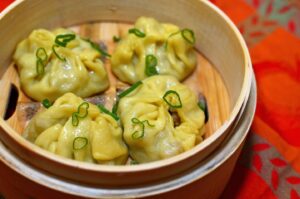
On this day, 77 years ago, the first session of the Japanese National Diet, known as kokkai (Congress).
The current Constitution of Japan was promulgated on November 3, 1946 and came into force on May 3, 1947. The first session of the Diet in this new era was held on May 20 of that year. Japan thus began to undergo post-war reconstruction by making profound political changes. In its article 41, the Constitution establishes that “the Diet will be the supreme body of state power and will be the only legislative body of the State”
Key organization for the organization of the State
The Constitution of Japan establishes the principle of separation of powers through three independent bodies: the Diet, the Cabinet and the Judiciary, each limiting the power of the others through a system of checks and balances. This prevents abuse of power and guarantees the rights and freedoms of the people.
The Diet consists of two chambers: the House of Representatives, composed of 465 members, and the House of Councilors, composed of 248 members, who together represent the entire Japanese people. Both chambers are elected by universal suffrage by all citizens over 20 years of age. Each chamber has plenary sessions and commissions.
The House of Representatives and the House of Councilors jointly exercise the powers of the National Diet by passing bills and measures by both chambers. The Diet’s powers include promulgating laws, making decisions on the budget and other matters related to national finances, as well as making decisions regarding the approval of international treaties, the appointment of the Prime Minister and the initiation of amendments. to the Constitution. In the event that the House of Representatives and the House of Councilors make opposite decisions on a bill or other certain measures, the Constitution recognizes the precedence of the House of Representatives and their collective decisions over the House of Councilors under certain conditions.
There are four ways to vote in plenary sessions of the House of Councilors: oral (asking if there are objections), standing (this action is requested if they are in favor of the topic discussed), by open vote (members in favor of a project issue white ballots with their names, and those who oppose them issue blue ballots), and by pressing buttons (approving and objecting).
Building witness to the transition to modernity
In 1918, a national competition was held to choose the design of the Diet building. Construction of the winning design began in 1920 and was completed in 1936. Today, the building stands out within the Nagatachō neighborhood of Tokyo’s Chiyoda Ward.
The main entrance is guarded by bronze doors that are open only to the Emperor for the opening of sessions, for state guests on official visits, and for new members on their first day after being elected.
In its central room, located directly below the structure’s characteristic tower, it is possible to see stained glass windows and marble floors. There are statues of men considered decisive in the founding of the Japanese parliamentary system. There is a fourth pedestal without a figure, as a reminder that the future will bring other great statesmen.

The building has an exclusive room for the Emperor, where he receives the presidents and vice presidents of both chambers before the opening ceremony.
The Chamber of Councilors is located on the second floor of the building, and is crowned with stained glass windows 13 meters high. Behind the seat assigned to the president is the Emperor’s throne, used during the opening ceremony.
Since 2016, tours have been offered in English and can be requested following the instructions on this website.

Graduate in Oriental Studies (University of Salvador). She is a Public Relations specialist. She has a higher diploma in Education, Images and Media (Latin American Faculty of Social Sciences). She has a Master’s Degree in Cultural Industries, Politics and Management (National University of Quilmes). She is a professor of the class on Japan in the subject Intercultural Processes, of the Master’s Degree in Cultural Diversity (National University of Tres de Febrero). She teaches training courses on the history, culture and protocol of China, Korea and Japan (Isaac Fernández Blanco Museum of Hispanic American Art).
Source: https://reporteasia.com/politica/2024/05/20/77-anos-primera-sesion-dieta-nacional-historia-composicion-organismo-importante-escenario-politico-japones/

